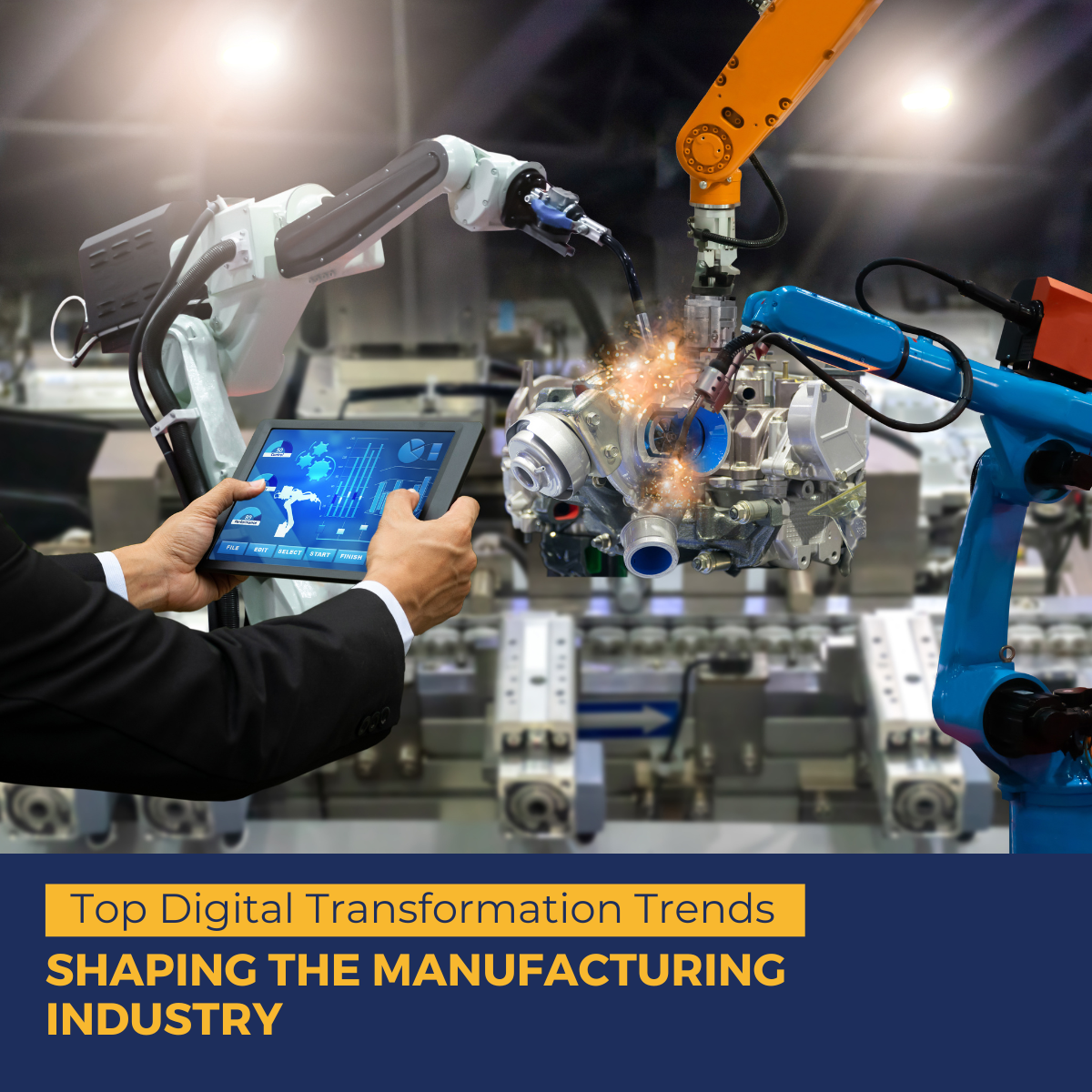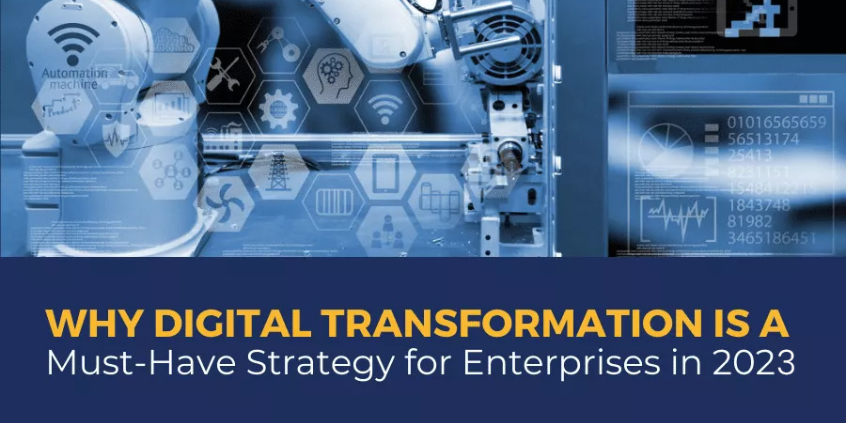Gone are the days when a single machine was operated by multiple people. With time, technology has transformed everything. Today machines have become compact, fast, and even smart. This paradigm shift to the digital has elevated the competition in the market.
Further, it has forced every industry to adopt the digital infrastructure to acquire and retain its users. The same is the case with the manufacturing industry. Along with automated robots and assembly lines, the manufacturing industry is undergoing significant changes. In the last five years, the adoption of digital technology has been tremendous.
Countless technologies have surfaced that revolutionized the manufacturing sector. Here in this article, we will analyze some of the existing and upcoming trends in the manufacturing industry.
Top Trends Leading to Digital Transformation in Manufacturing
Want to skyrocket the revenue numbers of your manufacturing business? Here are some of the advanced trends of digital transformation in manufacturing.
1. Predictive Maintenance
Traditional manufacturing practices lead to a lot of unplanned downtimes. This results in a tremendous loss of both capital and time for the industry, leading to delayed orders and untracked inventory. As per stats, an average manufacturer loses 800 hours of downtime.
To counteract this issue, manufacturers worldwide are automating their manufacturing tasks. For example, manufacturers fit IoT sensors in machines. This enables them to keep a check on the changing equipment parameters. Thus, preparing for maintenance in advance when required. Technologies like AI and data analytics can also be put in place to speed up the decision-making process.
2. Digital Twins
This is one of the most innovative trends that are not just for the manufacturing industry. It is also used by agriculture, aerospace, and consumer goods industries.
A digital twin is a digital replica or a copy of a machine or its parts. The benefit of a digital twin is that a manufacturer who is developing a machine can analyze everything about it beforehand. For example, a digital twin of an air conditioner can be fed with different current and voltage inputs to know about its efficiency. The benefit is, none of the physical products will be damaged if testing goes wrong.
3. Augmented Reality
Augmented reality is one of the hottest trends supporting manufacturing and various other industries. And it is clearly proved by its market. As per stats, the market share for AR and VR is ready to hit the $162 billion mark by 2025. But, how is it helping the manufacturing industries?
Field maintenance and user issues take away a lot of revenue from digital manufacturing solutions. With the proper AR tools, manufacturing firms can easily save these extra costs. For example, AR tools like an on-device troubleshooting app can be used by field engineers to resolve user issues.
They can seek help from remote experts via the app if required. The same applies to the repair work of machines. Remote help can save a lot of time and money for the technicians. AR features like annotations, screen recording, and live communication can come in handy.
Also Read : Key Aspects to Consider While Opting for Remote Assistance Solution
4. Hyperautomation
Many industry sectors like engineering, manufacturing, and even IT rely on manual, time-consuming processes to ensure smooth workflow. Though they achieve production efficiency, they still face challenges with bringing innovation.
Hyperautomation is a trend that is slowly penetrating the manufacturing industry. Today, manufacturing companies are using the collaboration of various technologies to eliminate tasks that require human efforts. AI, machine learning, sensors, and countless other technologies are used in sync to deliver fast output without error. The key goal is to automate as many processes as possible.
The integration of Hyperautomation solutions in the manufacturing workflow can save time for your workforce. Hence, they can focus on other important tasks like R&D.
5. IIoT
Just like IoT is a network of interconnected devices via the internet. IIoT is also a network of machines connected together via the internet. Unlike traditional systems, IIoT is taking the lead in changing the entire manufacturing workflow.
In the traditional system, there was no way of tracking the parameters and performance of the machines. However, today, with industrial IoT, manufacturers can keep an eye on every machine in their plant via an easy-to-navigate dashboard.
As tracking the machine’s performance is easy, one can easily keep up with their production and delivery deadlines. Furthermore, IIoT also allows you to track the damages to the machines if any. You can get them repaired in time to eliminate delays in the manufacturing process.
Closing Words
So, you know what kind of Digital Transformation Solutions you need to integrate into your manufacturing process. Make no mistake, some of these solutions need a significant amount of upfront investment. Hence, it is crucial to plan the transition. Once you put them in place, they will serve you for an extended period. The market for all of these solutions is projected to elevate for the next decade. Time is just right to embrace advanced solutions for taking your manufacturing company to a new level.





